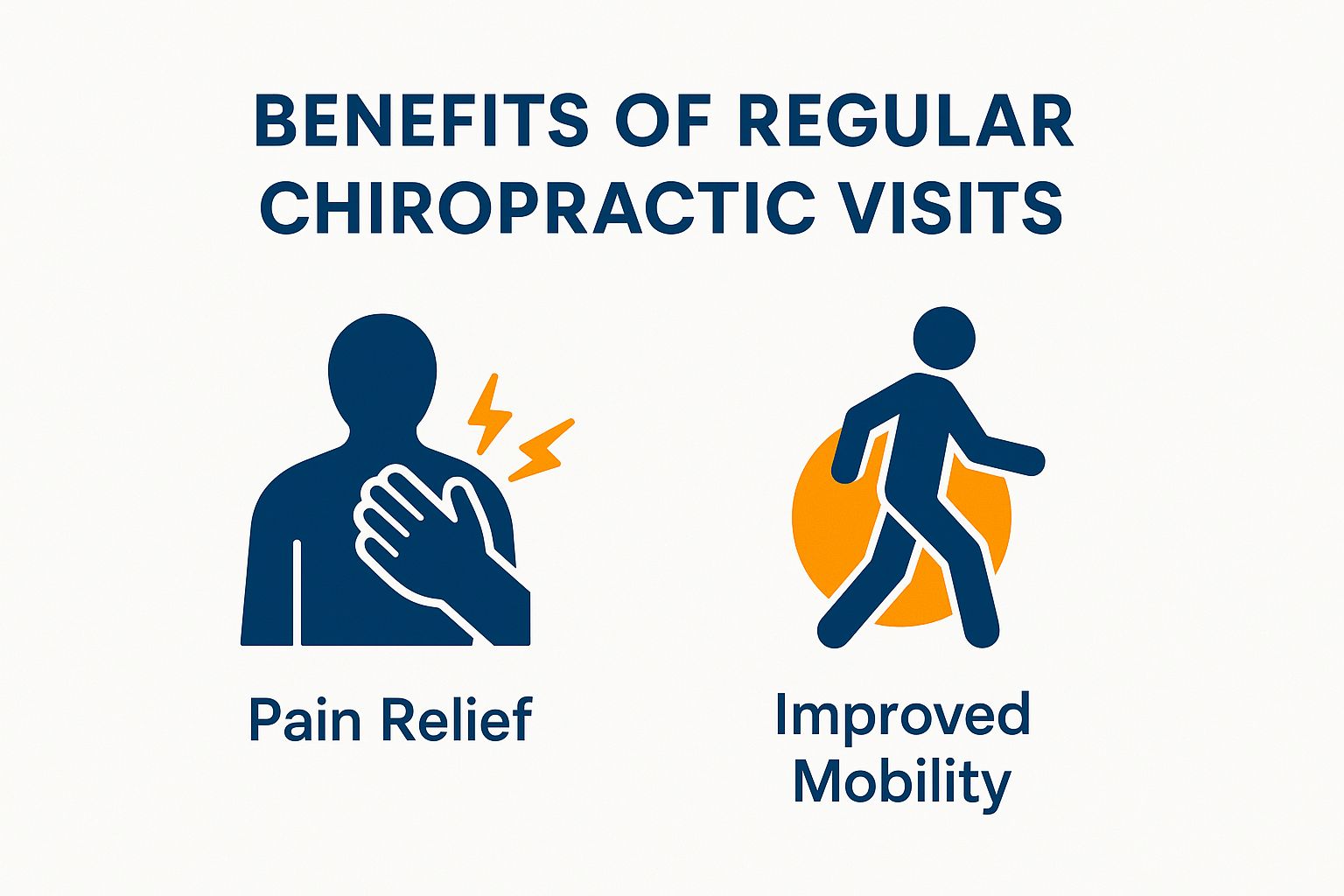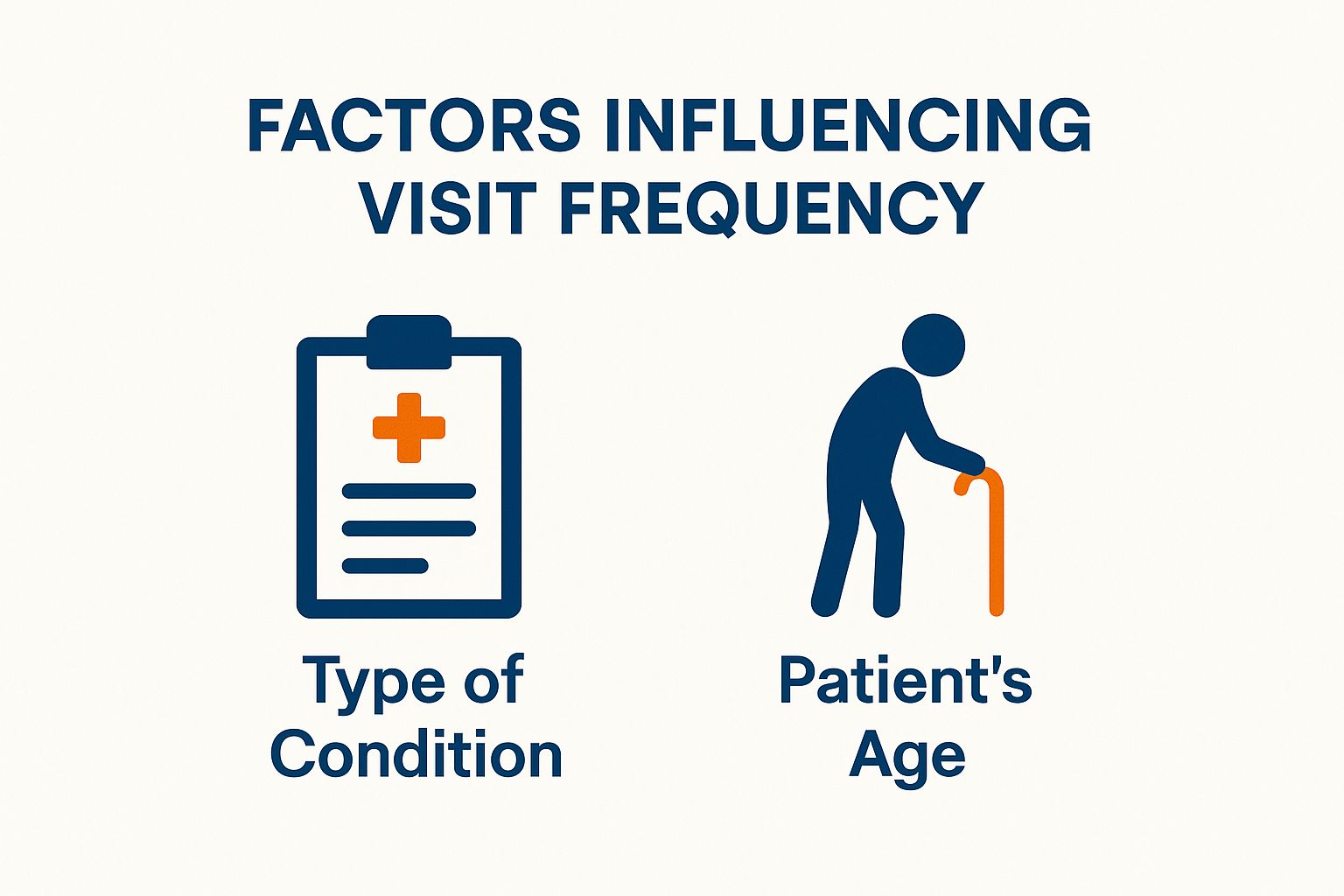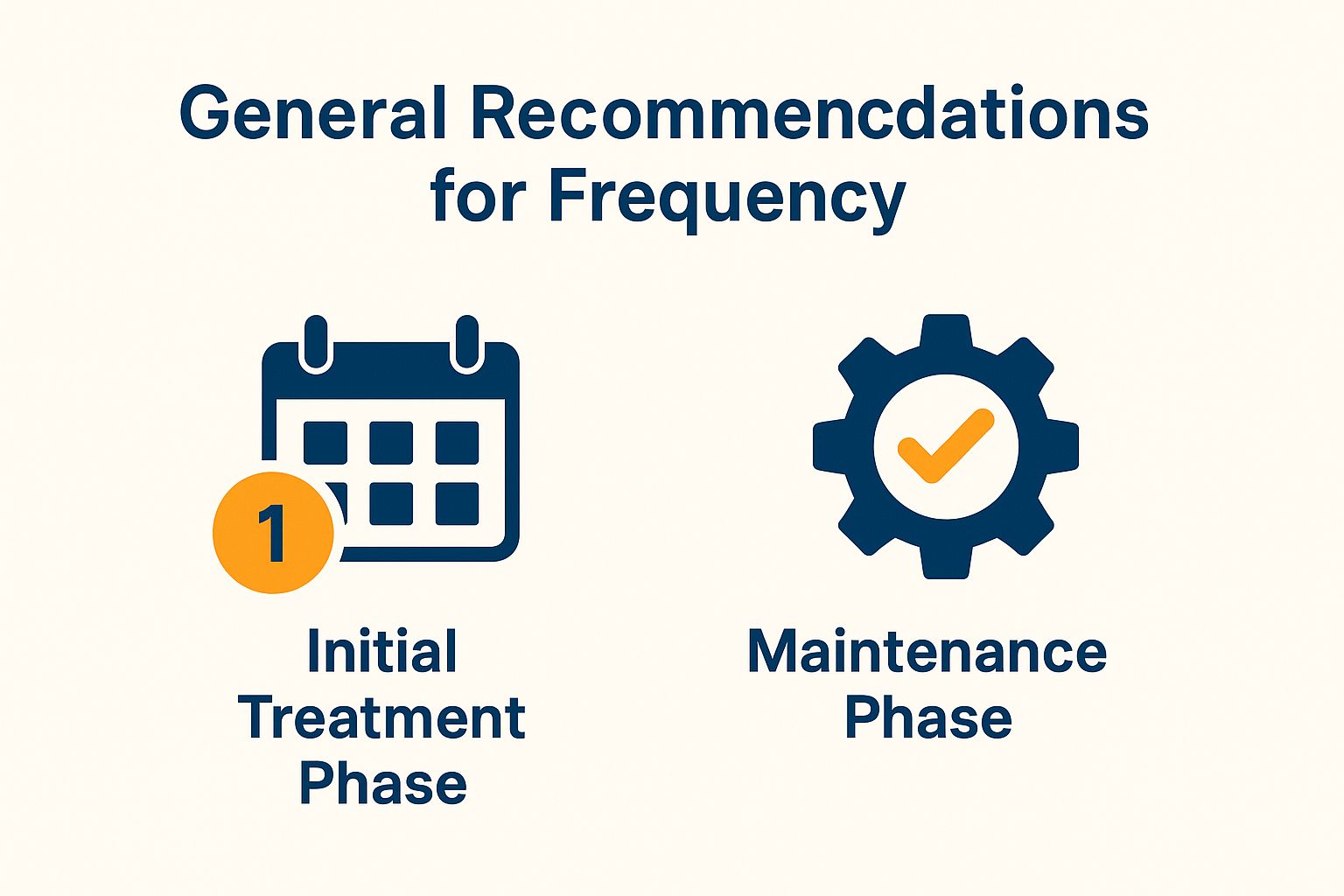
Chiropractic care offers a pathway to enhanced well-being, yet many patients find themselves questioning the right frequency of visits. Understanding how often to see a chiropractor is crucial for maximizing health benefits such as pain relief and improved mobility. Factors like the type of condition and age play significant roles in determining visit frequency. This exploration will uncover general recommendations, signs indicating the need for increased sessions, and the importance of personalized consultations with your chiropractor.
Benefits of Regular Chiropractic Visits
Regular chiropractic visits considerably enhance patient outcomes, providing both immediate and long-term benefits for a range of health conditions, including preventive care.

Pain Relief
Chiropractic adjustments have been shown to effectively alleviate pain, thereby reducing reliance on medications and enhancing the overall quality of life for patients suffering from chronic pain and acute pain.
Research indicates that patients receiving chiropractic treatment experience an average reduction of 60% in pain symptoms after six sessions. A study published in the Journal of Manipulative and Physiological Therapeutics revealed that 86% of patients reported significant pain relief following treatment.
Testimonials from individuals underscore improved mobility and decreased discomfort, highlighting the holistic benefits of chiropractic care. By concentrating on spinal alignment and joint function, chiropractors not only address immediate pain but also promote long-term wellness, enabling patients to participate in their daily activities with greater ease.
Improved Mobility
Regular chiropractic sessions significantly enhance mobility by addressing joint dysfunction and improving overall physical function, which is particularly critical for active individuals.
For example, one patient recovering from a sports injury demonstrated a 30% increase in neck mobility after just six weeks of treatment. Another case study revealed a 25% improvement in lumbar flexibility for a desk-bound employee, which notably alleviated lower back pain and joint pain.
Chiropractors utilize specific chiropractic techniques such as spinal manipulation and tailored stretching exercises to meet individual needs. Additionally, tools like therapeutic ultrasound may be employed to further enhance recovery and mobility.
Regular assessments are conducted to monitor progress, allowing for adjustments in treatment to achieve optimal patient outcomes.
Factors Influencing Visit Frequency
The frequency of chiropractic visits is contingent upon several individual factors that influence the effectiveness of treatment and the specific health objectives of the patient.

Type of Condition
Acute injuries may necessitate more frequent visits, whereas chronic conditions typically benefit from a consistent, long-term treatment plan. For example, a sprained ankle may require therapy sessions 2-3 times per week during the initial weeks to promote healing and restore range of motion.
Conversely, a chronic issue such as lower back pain or neck pain may justify weekly sessions over several months, facilitating gradual improvement. It is crucial to evaluate the condition thoroughly; consulting with a physical therapist is recommended to create a customized treatment schedule based on individual needs.
This approach allows for the establishment of metrics to monitor progress and determine when adjustments to visit frequency are necessary.
Patient’s Age
Age is a significant factor in determining the frequency of chiropractic visits, as younger patients generally require less frequent adjustments compared to older adults.
Children typically benefit from 1-2 visits per month, given that their bodies are still in a developmental stage, making it relatively easier to achieve optimal alignment. In contrast, elderly patients may necessitate weekly adjustments; the aging process often results in chronic conditions such as arthritis or spinal degeneration, which require more regular care to manage discomfort and maintain mobility. This personalized care ensures optimal patient health.
A personalized assessment conducted by the chiropractor can help establish the optimal frequency of visits, ensuring that each patient’s specific health concerns are addressed appropriately.
General Recommendations for Frequency
Establishing a consistent schedule for chiropractic visits is essential for effective care, as it ensures that patients receive the maximum benefits while optimizing their health outcomes.
If you are in the Jupiter, FL area, Nordik is a great option for a chiropractor. Make sure you contact Nordik Chiropractic if you are looking to get started…

Initial Treatment Phase
During the initial phase of treatment, patients generally attend 2-3 sessions per week to effectively address acute symptoms. This frequency not only facilitates immediate symptom relief but also promotes patient engagement in the therapeutic process and proactive health.
To optimize progress, clinicians should encourage patients to establish specific goals for each session, such as improving range of motion or reducing pain. Progress monitoring can be effectively implemented through straightforward tools, including weekly self-assessments or progress charts, and follow-up visits.
Maintaining open communication during and between sessions is essential for making necessary adjustments to the treatment plan, ensuring a personalized approach that aligns with each patient’s individual experiences.
Maintenance Phase
During the maintenance phase, chiropractic visits are typically scheduled at a frequency of 1 to 2 times per month to promote ongoing health and prevent potential issues.
This regularity allows chiropractors to monitor spinal health effectively and address any misalignments that may result in discomfort or injury. Routine check-ups can aid in the early identification of underlying issues, facilitating timely intervention.
For example, a patient experiencing occasional tension may find it beneficial to visit their chiropractor monthly, whereas individuals with chronic pain might require more frequent visits at the outset.
Additionally, utilizing tools such as a health journal can assist in tracking symptoms and progress. This practice enables both patients and chiropractors to make informed adjustments to care plans, ultimately supporting long-term wellness.
Signs You May Need More Frequent Visits
Identifying indicators that suggest the necessity for more frequent chiropractic visits can enhance recovery and optimize treatment outcomes. Patients should contemplate scheduling additional appointments if they experience any worsening of pain, diminished mobility, or the emergence of new symptoms. Early intervention can significantly shorten the recovery time and improve overall wellness.
For example, if lower back pain intensifies from a dull ache to a sharp discomfort, it is crucial to inform the chiropractor promptly. Additionally, if routine activities such as bending or lifting become increasingly challenging, this may signify the need for a reassessment of the treatment plan.
Ongoing communication is vital; many clinics encourage patients to report any changes immediately. This proactive approach allows for timely adjustments to treatment plans, thereby facilitating a more effective and efficient recovery process.
Consulting Your Chiropractor
Open communication with your chiropractor is essential for determining the optimal treatment frequency tailored to your individual needs and health objectives. This consultation can help identify necessary lifestyle changes to enhance the effectiveness of the therapy.
It is important to begin by discussing your specific symptoms and relevant lifestyle factors, such as activity level and stress. This context enables your chiropractor to assess the frequency of visits that would be most beneficial for you, ensuring individualized care.
For example, if you lead a sedentary lifestyle and experience chronic back pain, more frequent visits may be advantageous. Conversely, if you are actively managing minor issues, bi-weekly appointments may be adequate.
Additionally, do not hesitate to inquire about any necessary adjustments to your treatment plan based on your progress, ensuring a collaborative approach to your care.
